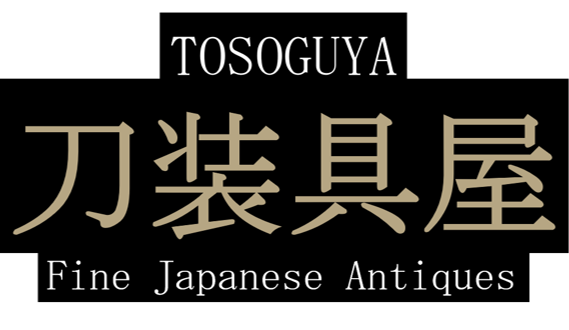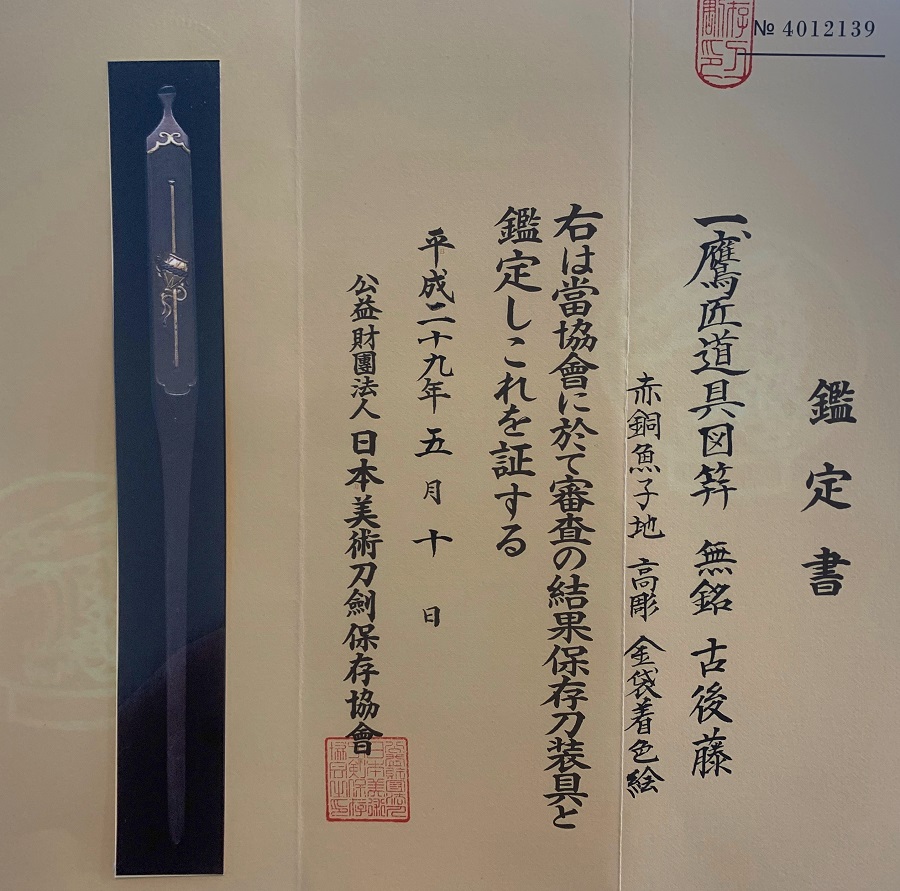

The motif of this kōgai is of falconer training equipment (鷹匠道具図). The items shown on this kogai include a small decorative woven wicker basket called a kuchiekago, used to carrying dead sparrows which are fed to the hawk in the field; a silk leash called an ōo, and a rod of ~30" length called a buchi often a wisteria branch, frayed at one end and used as a brush to clean the hawk's beak and feet, and reorder disarranged feathers (see image below from an Edo period falconry book). Falconry was a very prestigious and popular activity during the late Muromachi, and reserved for high ranking samurai and daimyo. This kogai was likely made for a person of considerable rank and means, who was a falconry practitioner.
The kōgai is made of black shakudō (赤銅), with a very finely punched background of nanako (魚子地). The fine nanako on the plate shows almost no wear, which is quite remarkable considering the age of the piece. Gold is applied to acceptuate the motif using a technique called uttori, where a thin gold foil covers the carving and is pressed into very thin slots around the areas of relief. Gold is also inset into the carved curvilinear motif at the back of the decorative plate, called the warabite. The NBTHK Hozon papers use an alternate term for uttori, in this case, kanabukuro-kise iroe (金袋着色絵), which literally means 'application of a gold bag [coloration]'. The motif itself is a executed in high relief or takabori (高彫). THe gold application is very well preserved on this kōgai, and the plate and nanako are in excellent condition. Comes with a custom fitted box. This is an excellent piece for any collection, and the martial motif is very attractive, reflective of the spirit of the times.
Translation of the Hozon paper description follows:
鷹匠道具図笄 (Takajō
dōgu zu
kōgai)
無銘 古後藤 (Mumei Ko-Gotō)
赤銅 魚子地 高彫 金袋着色絵 (Shakudō nanako-ji
takabori kanabukuro-kise iroe)
Heisei 29th year (2017) May 10th
Measurements: 21.32cm x 1.29cm x 0.5cm
Muromachi Period (室町時代), late 15th to mid 16th century
$1,600


